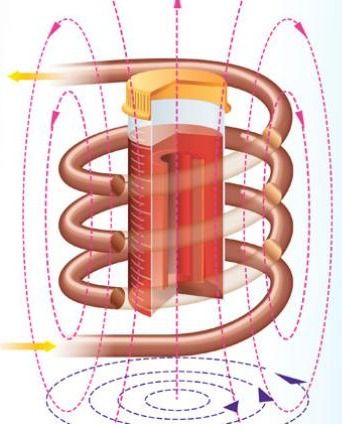Page 10839
Mar 4, 2017
Groundbreaking technology rewarms large-scale animal tissues preserved at low temperatures
Posted by Sean Brazell in categories: biotech/medical, finance, nanotechnology
Great news and a very promising vector for near future innovation!

A research team led by the University of Minnesota has discovered a way to rewarm large-scale animal heart valves and blood vessels preserved at very low (cryogenic) temperatures without damaging the tissue. The discovery could one day lead to saving millions of human lives by creating cryogenic tissue and organ banks of organs and tissues for transplantation.
Mar 4, 2017
Google Deep Learning system diagnoses cancer better than a pathologist with unlimited time
Posted by Lily Graca in categories: biotech/medical, robotics/AI
Google has been working on advanced image-recognition systems for several years through its GoogLeNet projects. The project was, in part, aimed at the company’s autonomous car project, teaching self-driving cars to recognize everything from road layouts to stop signs.
The company has now applied GoogLeNet tech to cancer diagnosis, and reports that the system was already delivering good results straight out of the box, but says that tweaking the system has delivered stunning performance.
Pathologists have always faced a huge data problem in order to obtain an accurate diagnosis. A massive amount of information — slides containing cells from tissue biopsies, thinly sliced and stained — must be scanned in search of any abnormal cells. And time is of the essence.
Mar 4, 2017
New Evidence Links the Collapse of Aztec Society to a Deadly Salmonella Outbreak
Posted by Germen Roding in categories: biotech/medical, genetics
A new pathogen can have devastating consequences in genetically homogenous populations.
When Spanish forces arrived in Mexico in 1519, the native population was estimated to be around 25 million. A century later, there were only around 1 million left, following several devastating outbreaks of disease brought in from overseas.
Despite plenty of speculation, the diseases that contributed to the collapse of Aztec society remain unconfirmed. But now scientists have presented the first DNA evidence of a bacterial species from one of the worst epidemics — and it suggests that a deadly outbreak of salmonella might have been involved.
Mar 4, 2017
Californian researchers 3D print functioning blood vessels
Posted by Klaus Baldauf in categories: 3D printing, bioprinting, biotech/medical
Researchers from the University of California, San Diego have successfully 3D printed a framework of functional blood vessels. Blood vessel networks are important in transporting blood, nutrients and waste around the human body.
The research team employed a 3D bioprinting process involving hydrogel and endothelial cells. Endothelial are the form of cells that make up the inner lining of blood vessels.
Leading the research was Shaochen Chen, who explains the motivation of the project.
Continue reading “Californian researchers 3D print functioning blood vessels” »
Mar 4, 2017
Transhumanism: More Nightmare Than Dream?
Posted by Zoltan Istvan in categories: biotech/medical, cyborgs, ethics, law enforcement, life extension, policy, robotics/AI, transhumanism
A new well written but not very favorable write-up on #transhumanism. Despite this, more and more publications are tackling describing the movement and its science. My work is featured a bit.
On the eve of the 20th century, an obscure Russian man who had refused to publish any of his works began to finalize his ideas about resurrecting the dead and living forever. A friend of Leo Tolstoy’s, this enigmatic Russian, whose name was Nikolai Fyodorovich Fyodorov, had grand ideas about not only how to reanimate the dead but about the ethics of doing so, as well as about the moral and religious consequences of living outside of Death’s shadow. He was animated by a utopian desire: to unite all of humanity and to create a biblical paradise on Earth, where we would live on, spurred on by love. He was an immortalist: one who desired to conquer death through scientific means.
Despite the religious zeal of his notions—which a number of later Christian philosophers unsurprisingly deemed blasphemy—Fyodorov’s ideas were underpinned by a faith in something material: the ability of humans to redevelop and redefine themselves through science, eventually becoming so powerfully modified that they would defeat death itself. Unfortunately for him, Fyodorov—who had worked as a librarian, then later in the archives of Ministry of Foreign Affairs—did not live to see his project enacted, as he died in 1903.
Continue reading “Transhumanism: More Nightmare Than Dream?” »

We are a company that specializes in propeller-based hoverboards. Our mark-1 prototype managed to travel a total distance of 275.9 m (905 ft and 2 inches) to achieve a new Guinness World Records title for the longest distance travelled by a hoverboard.
We invited CBC into our workshop where we are building the hoverboard. Stay tuned for the final consumer prototype.
Mar 4, 2017
10 Million Self-Driving Cars Will Hit The Road By 2020 — Here’s How To Profit
Posted by Dan Kummer in categories: robotics/AI, transportation
Given the advanced state of driverless technologies and the amount of money being poured into the sector, there is little question—make that, no question at all—that within 10 years, driverless cars will be the norm.
The implications are immense and widespread.
There are currently about 1.4 billion cars on the road. Many of those cars, and eventually all, are going to be replaced by self-driving vehicles.
Continue reading “10 Million Self-Driving Cars Will Hit The Road By 2020 -- Here’s How To Profit” »
Mar 4, 2017
A Universal Basic Income? Slow Your Roll, Silicon Valley
Posted by Dan Kummer in categories: economics, employment
While there are different flavors of the UBI, the basic concept is that everyone just gets money for existing—this, in theory, would help keep the economy running smoothly even as people are working less.
“Sounds like a communist scheme” jokes Pethokoukis. But he explains how this is actually a very old idea that has its roots on the political right as a way to simplify the welfare state. It’s an idea that’s really taken off among the libertarian-leaning luminaries of the tech world in recent years.
“Silicon Valley has sort of latched on to this idea. They have the most aggressive timetable as far as when we will actually see all these jobs hemorrhage,” explains Pethokoukis.
Continue reading “A Universal Basic Income? Slow Your Roll, Silicon Valley” »
Mar 3, 2017
These 12 Superbugs Could Wipe Out Humanity
Posted by Bryan Gatton in categories: biotech/medical, health
Antibiotic resistance continues to rise, and new drugs made to battle these increasingly formidable  microbes could take more than a decade to develop. In an effort to stress the urgency of this rising resistance, the World Health Organization (WHO) created a list of the twelve deadliest superbugs with which we are currently dealing.
microbes could take more than a decade to develop. In an effort to stress the urgency of this rising resistance, the World Health Organization (WHO) created a list of the twelve deadliest superbugs with which we are currently dealing.
The list is broken into three categories based on the severity of the threat (medium, high, or critical) that a given superbug poses. The three critical bacteria, Acinetobacter baumannii, Pseudomonas aeruginosa, and Enterobacteriaceae, are all already resistant to multiple drugs. One of these (Pseudomonas aeruginosa) actually explodes when they die, making them even more deadly.
Pathogens that cause more common diseases like food poisoning or gonorrhea round out the rest of the list. Some big hitters include MRSA and salmonella.
Continue reading “These 12 Superbugs Could Wipe Out Humanity” »















